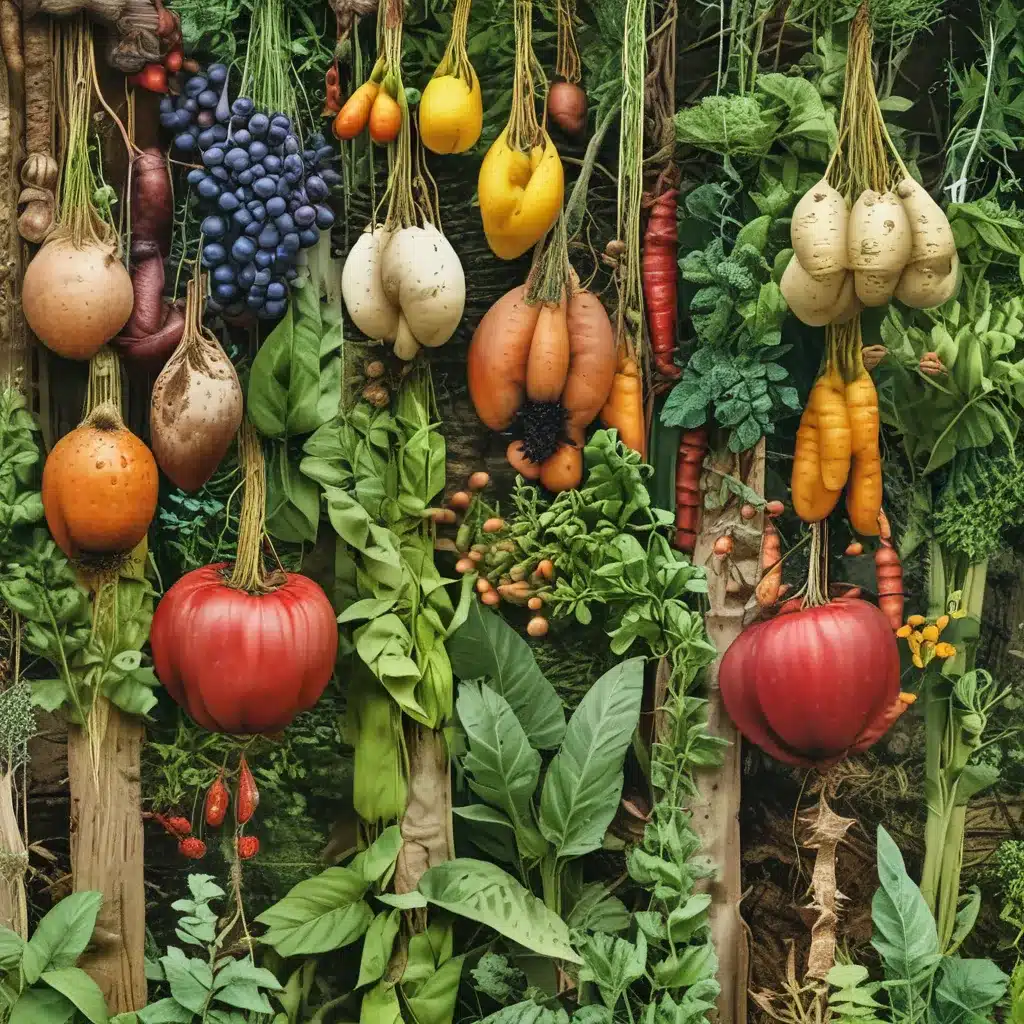
Embracing the Gentle Giant
As I strolled through the lush fields of Thornappple CSA, the verdant landscape unfolded before me like a symphony of life. Rows of vibrant vegetables swayed gently in the breeze, their leaves rustling a soothing melody. Amidst the emerald tapestry, I spotted a bumble bee lazily crawling over a bright yellow flower, its fuzzy body a testament to the thriving ecosystem.
It’s in moments like these that I’m reminded of the delicate dance between biodiversity and productivity that lies at the heart of organic farming. While conventional agriculture might boast higher yields, it often comes at the cost of ecological balance, sacrificing the intricate web of life that sustains our planet. But here, in this oasis of mindful cultivation, I witness the gentle harmony that can be achieved when we work in tandem with nature.
The Organic Advantage
As I delve deeper into the principles of organic farming, I’m struck by the layers of complexity that underpin this approach. It’s not merely about eschewing synthetic fertilizers and pesticides; it’s a holistic system that harnesses the power of natural cycles, promotes soil health, and fosters an environment where diverse life forms can thrive.
According to the Center for Food Safety, organic agriculture is “an ecological production management system that promotes and enhances biodiversity, biological cycles, and soil biological activity.” This means that every decision made by the organic farmer is carefully considered to maintain the delicate equilibrium of the land.
Overcoming the Productivity Challenge
Of course, the path to organic harmony is not without its challenges. As studies have shown, organic farming typically requires 2-3 times more land than conventional methods to produce the same amount of food. This land-use efficiency gap is a significant hurdle, especially in a world where arable land is a precious commodity.
Additionally, the yield gap between organic and conventional farming, estimated at 20-25%, further highlights the productivity challenges facing organic systems. Factors like nutrient management, pest control, and weed management can all contribute to these lower yields, as organic farmers must rely on more labor-intensive and sometimes less effective natural methods.
However, it’s essential to recognize that this productivity comparison is only one piece of the puzzle. As research published in Science Direct suggests, the environmental benefits of organic farming, such as reduced pollution, enhanced biodiversity, and improved soil health, must also be factored into the equation.
Bridging the Gap
So, how do we bridge the gap between organic productivity and conventional yields? The key lies in continued innovation, research, and a holistic understanding of sustainable agriculture.
One promising avenue is the integration of new technologies into organic farming practices. Precision agriculture tools like GPS and data analytics can help optimize resource management, while advancements in biotechnology could yield organic-compatible, pest-resistant, and drought-tolerant crop varieties. By harnessing the power of science and technology, we can enhance the efficiency of organic systems without compromising their ecological principles.
Additionally, increased funding and policy support for organic research and development can help drive breakthroughs in areas like soil fertility management, natural pest control, and weed management. Collaborations between scientists, organic farmers, and environmental experts can lead to more effective and sustainable organic farming practices.
Cultivating Harmony
As I wander through the verdant fields of Thornappple CSA, I’m reminded that the balance between biodiversity and productivity is not a destination, but a journey. It’s a constant dance of adaptation, innovation, and reverence for the natural world.
The organic farmers here have mastered the art of coexistence, seamlessly weaving together the needs of the land, the plants, and the surrounding ecosystem. They understand that true productivity is not just about maximizing yields, but about nurturing a thriving, self-sustaining environment.
Through their commitment to organic principles, they’ve created a space where the gentle giant of biodiversity and the efficient powerhouse of productivity coexist in perfect harmony. It’s a lesson in the power of patience, the importance of ecological balance, and the profound joy that comes from working in tandem with the rhythms of nature.
As I bid farewell to this enchanting oasis, I can’t help but feel inspired. The future of sustainable agriculture may not be an easy path, but it’s one that holds the promise of a healthier, more bountiful world – a world where organic harmony reigns supreme.



